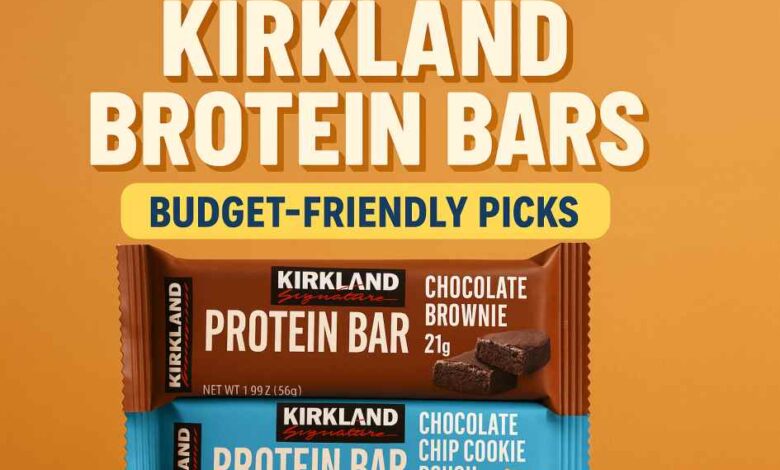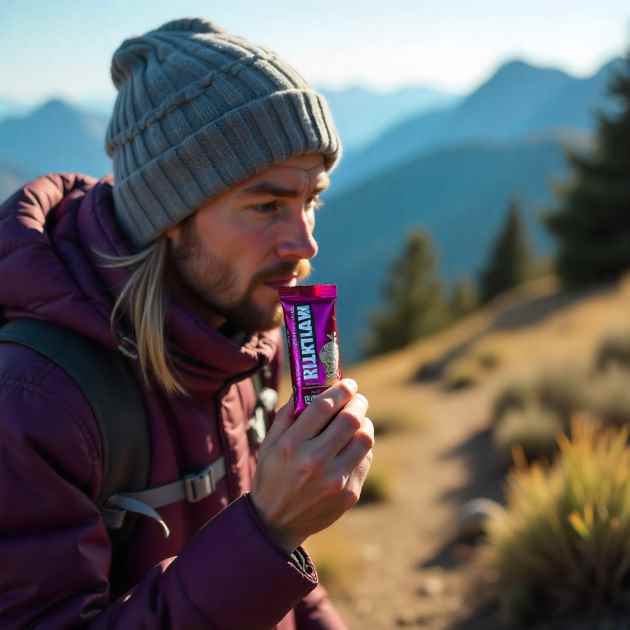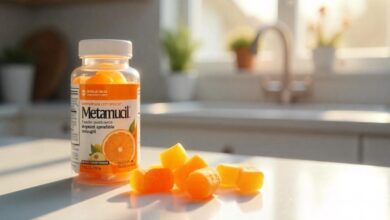
Busy days, tight budgets, and fitness goals don’t always line up. That’s where a reliable, affordable protein snack can help. kirkland protein bars have become a go-to for many shoppers who want a portable, filling option without paying premium prices. This article digs deep into what these bars are, how they compare to competitors, who they’re best for, and exactly how to use them so they fit your goals whether that’s muscle recovery, satiety between meetings, or a convenient travel snack.
Throughout this guide you’ll find easy-to-read sections, clear comparisons, and actionable buying and usage tips. I use plain language, cite trustworthy ideas about nutrition, and focus on giving you practical takeaways so you can decide if kirkland protein bars deserve a spot in your pantry.
What are kirkland protein bars?

kirkland protein bars are protein snack bars sold under Kirkland Signature, Costco’s private label. They are designed to provide a concentrated source of protein in a convenient, shelf-stable bar. Kirkland’s bars are positioned as value-forward options — generally sold in multi-packs at Costco — and intended to offer an economical way to get extra protein between meals or after workouts.
Key characteristics:
- Brand: Kirkland Signature (Costco private label)
- Form: Individually wrapped bars, often sold in bulk
- Intended use: Snack, mini-meal, or post-workout recovery
- Typical protein per bar: Often around 15–20 grams (varies by flavor and formula)
- Calorie content: Generally, each bar contains between 180 and 260 kcal.
- Target audience: Budget-conscious shoppers, busy professionals, students, fitness-minded people
Note: Formulas and flavors can change over time. Packaging and nutrition facts may differ between production batches or region.
Why people choose kirkland protein bars

People pick these bars for several practical reasons. Below are the most common motivations:
- Value for money: Costco pricing and multi-pack options generally make Kirkland bars cheaper per serving compared with many national brands.
- Convenience: Individually wrapped bars are easy to stash in a bag, car glove compartment, or desk drawer.
- Dependable macronutrient balance: Numerous Kirkland bars are designed to provide a good amount of protein, which makes them a great option for those looking for protein-rich snacks.
- Availability for members: If you shop at Costco, Kirkland Signature products are easy to find and often rotate through flavors.
For many shoppers, the value-to-quality ratio is the main draw: you get a useful protein boost at a lower price than premium bars with heavy marketing.
Nutrition snapshot: kirkland protein bars across flavors
Nutrition varies by flavor, but here’s a general snapshot to help set expectations. Always check the specific nutrition label for the flavor you buy.
- Protein: Usually 15–20 g per bar
- Calories: Approximately 180–260 kcal per bar
- Fat: Often 6–12 g per bar (depending on nuts, coatings, and recipe)
- Carbohydrates: Typically 15–30 g; includes fiber and sugars
- Fiber: Commonly 2–6 g per bar
- Sugars: Varies widely; some flavors have higher added sugars
- Sodium: Moderate; some bars have 150–300 mg per serving
Practical interpretation:
- A bar with ~20 g protein and ~220 kcal is useful as a substantial snack or small meal replacement.
- If you’re monitoring sugar, choose flavors with lower total sugars or more fiber.
- For strict macro plans, always add the bar’s nutritional values into your daily totals.
Flavor and texture overview
Taste and texture are hugely personal, but there are consistent patterns with kirkland protein bars:
- Popular flavors: Chocolate, peanut butter, cookies & cream, and chocolate chip are commonly offered or mirrored in similar Kirkland products.
- Texture: Many Kirkland bars land on the soft-chewy side rather than crunchy. Some users report a slightly dense or pasty texture in certain flavors due to the protein blend.
- Sweetness: Expect a noticeable sweetness level. Some flavors aim to mimic candy-like bars, while others stay more neutral.
- Mouthfeel: Chocolate-coated varieties can offer a pleasant contrast; nut-based bars are usually denser and more satiating.
Tip: If texture matters a lot to you, try one bar before buying in bulk, or read recent customer reviews since batches and formulations can change.
Who should consider kirkland protein bars?
kirkland protein bars can work well for different people. Here are common profiles that benefit:
- Busy professionals and students: When time is short and you need a quick, filling snack between responsibilities.
- Fitness-minded shoppers: For post-workout quick protein, especially when a gym is far from home or you lack prepared meals.
- Travelers and commuters: Long journeys or irregular schedules call for shelf-stable, non-perishable snacks.
- Budget-conscious families: Bulk buying at Costco lowers the per-bar price, making them economical pantry staples.
- Beginner macro-trackers: Those just starting to count protein and calories may find Kirkland bars an easy-to-track option.
Who might avoid them:
- People with specific allergies (nuts, dairy, soy) should read labels carefully.
- Those aiming for very low-sugar or whole-food-only plans might prefer alternatives or homemade bars.
How to choose the right kirkland bar for your goals
Choosing the best bar depends on your goal: recovery, weight control, energy, or convenience. Here’s a practical checklist.
- Define purpose:
- Post-workout: prioritize higher protein (18–20 g) and moderate carbs.
- Between meals: look for balanced calories (200–250 kcal) with fiber to curb hunger.
- Meal replacement: choose a bar with higher calories and protein and add fruit or yogurt if needed.
- Read the label:
- Protein grams per serving — fits your protein target?
- Total calories — does it match your meal or snack plan?
- Sugar and added sugars — lower is better if avoiding sugar spikes.
- Fiber — higher fiber helps with satiety.
- Sodium — watch if reducing sodium intake.
- Check ingredients:
- Allergens like nuts, milk, soy.
- Artificial sweeteners if you avoid them.
- Whole-food ingredients vs. highly processed fillers.
- Match flavor to tolerance:
- If you’re not a fan of bars that are too sweet, choose options with simpler flavors or those that emphasize nuts.
- If you like dessert-style treats, chocolate-coated or cookie-style varieties may satisfy cravings.
- Trial and adjust:
- Buy 1–2 bars of a new flavor first.
- Note how you feel 1–2 hours after eating (satiety, energy, digestion).
- Decide if that flavor or type fits your routine before stocking up.
Pros, cons, and common myths
Pros
- Cost-effective: Bulk Kirkland packs lower per-bar pricing.
- Convenient: Individually wrapped and portable.
- Decent protein: Many bars deliver a useful protein dose for snacks or light post-workout recovery.
- Widely available to Costco members: In-store and sometimes online.
Cons
- Flavor/texture variability: Not every flavor or batch will satisfy every palate.
- Added sugars and sodium: Some flavors contain more sugar or sodium than others; watch labels.
- Allergens: Many formulas include nuts, dairy, or soy.
- Not gourmet: If you want craft ingredients or very clean-label products, Kirkland bars may fall short.
Common myths
- Myth: “All Kirkland bars are the same.” — False. Formulations and flavors vary, so nutrition and taste differ across lines.
- Myth: “Store-brand means low quality.” — Not necessarily. Many private-label products match national brands in quality but without marketing markup.
- Myth: “Protein bars are always healthy.” — Not always. Some bars are calorie-dense or high in added sugars; food context matters.
Real-world use cases and practical tips

Here are actionable ways people actually use kirkland protein bars, plus pairing tips.
- Post-workout recovery
- Pair a bar (15–20 g protein) with a small banana or shake for faster glycogen refill and muscle repair.
- Afternoon energy boost
- Pair with a small serving of yogurt or an apple to balance carbs and add micronutrients.
- Travel or hiking
- Good shelf life, durable packaging, and compact size make them ideal for backpacks or carry-ons.
- Emergency meal replacement
- When you can’t prepare food, a bar with ~200–250 kcal and reasonable protein helps bridge the gap.
- Portion control
- Use a bar to prevent bingeing later — a measured calorie and protein amount helps keep hunger in check.
Practical tips:
- Store bars at room temperature away from heat. Avoid leaving in hot cars for long periods if chocolate-coated.
- Rotate flavors for variety — even budget shoppers appreciate flavor diversity.
- Pair with water — solid snacks often require hydration to aid digestion.
Alternatives and comparisons
kirkland protein bars aren’t the only option. Here’s how they compare with other types and labels.
- National brands (e.g., Quest, RXBAR, CLIF)
- Pros: Often strong flavor profiles, variety, targeted ingredients (e.g., egg white protein).
- Cons: Higher per-bar price; sometimes more artificial sweeteners.
- Other store brands
- Pros: Often similar pricing and value.
- Cons: Quality and taste vary; check labels.
- Whole-food snacks (nuts, Greek yogurt, hard-boiled eggs)
- Pros: Less processed, often more nutrient-dense.
- Cons: Less convenient for travel, shorter shelf life.
- Homemade protein bars
- Pros: Full control over ingredients and macros.
- Cons: Time-consuming; not always cheaper when accounting for ingredient costs.
Comparison takeaways:
- If you prioritize affordability and convenience, kirkland protein bars are a strong choice.
- If you prioritize minimal processing or specialized diets (keto, paleo, allergen-free), you might prefer specialty brands or DIY options.
- For serious athletes with very specific macro needs, track the bar’s nutrition tightly and supplement with whole foods as needed.
Competitor analysis and market context
To understand how kirkland protein bars fit the market, consider common competitive dimensions: price, protein content, ingredient transparency, flavor variety, and brand positioning.
- Price: Costco’s bulk model typically keeps per-bar costs lower than retail prices for national brands.
- Protein Levels: Kirkland offers a strong selection of snack bars that are great for everyday use; however, higher-end sports bars often have increased protein amounts by utilizing concentrated isolates.
- Ingredients and transparency: Private-label brands often mirror successful formulations from national players, but ingredient lists can be less “clean” than premium niche brands.
- Flavor and variety: Kirkland offers a few flavors that cover mainstream tastes but may not match the extensive flavor libraries of major brands.
Market context:
- The global protein bar market blends health-conscious consumers with convenience-seeking shoppers. Private-label offerings like Kirkland target the value segment of this market while still delivering mainstream flavor profiles and practical nutrition figures.
Scientific and practical evidence for protein bars
Why use a protein bar at all? Here’s a plain-language summary supported by nutrition guidance.
- Protein supports muscle repair and satiety: Protein intake after resistance exercise helps muscle
Conclusion
kirkland protein bars offer a straightforward, budget-friendly option for people who need portable protein on busy days. They deliver reasonable protein per serving, convenient packaging, and strong value when bought in bulk at Costco. For many users, students, commuters, casual athletes, and budget-conscious shoppers, these bars strike a useful balance between cost and convenience.
That said, not all Kirkland bars are identical. Nutrition, flavor, and texture vary by formula and flavor, so it’s important to:
- Check the Nutrition Facts for protein, calories, sugar, fiber, and sodium.
- Read ingredient lists for allergens (nuts, dairy, soy) or ingredients you prefer to avoid.
- Try single bars first before committing to bulk purchases if you’re sensitive to taste or texture.
Use kirkland protein bars as a practical tool:
- Post-workout: choose higher-protein options and pair with carbs as needed.
- Between meals: pick bars with decent fiber to stay full longer.
- On the go: stash bars for travel, commuting, or busy workdays.
Overall, if your priority is a cost-effective, convenient protein snack, kirkland protein bars are worth considering. For specialized diets, minimal processing, or tailored macros, compare labels with other brands or make homemade bars tailored to your needs.
Frequently Asked Questions (FAQ)
1. How much protein is in kirkland protein bars?
Answer: Most Kirkland protein bars typically contain about 15–20 grams of protein per bar, though the exact amount varies by flavor and formula. Always check the Nutrition Facts label on the specific bar you buy to confirm the protein grams.
2. Are kirkland protein bars good for post-workout recovery?
Answer: Yes, they can be useful for post-workout recovery when paired with other carbs or fluids if needed. Bars with around 18–20 g protein are suitable for supporting muscle repair after moderate exercise. For intense training, consider adding a fruit or shake to increase carbs and speed glycogen replenishment.
3. Do kirkland protein bars contain a lot of added sugar?
Answer: Sugar content varies by flavor. Some Kirkland bars have moderate to higher added sugars, while others keep sugar lower and rely on fiber or alternative sweeteners. Check the label for Total Sugars and Added Sugars to choose a lower-sugar option if that’s important to you.
4. Are kirkland protein bars suitable for people with food allergies?
Answer: Not always. Many Kirkland formulations include nuts, dairy, soy, or other common allergens. Read the ingredient list and allergen warnings on the package carefully. If you have severe allergies, consider allergy-friendly brands or homemade bars with controlled ingredients.
5. How should I use kirkland protein bars in a healthy eating plan?
Answer: Use them as a convenient snack, quick post-workout protein source, or occasional meal replacement when fresh food isn’t available. Match the bar’s calories and macros to your daily goals—if a bar is low on fiber or micronutrients, pair it with fruit, yogurt, or vegetables to balance the meal.




